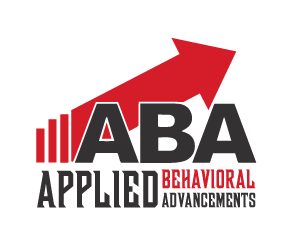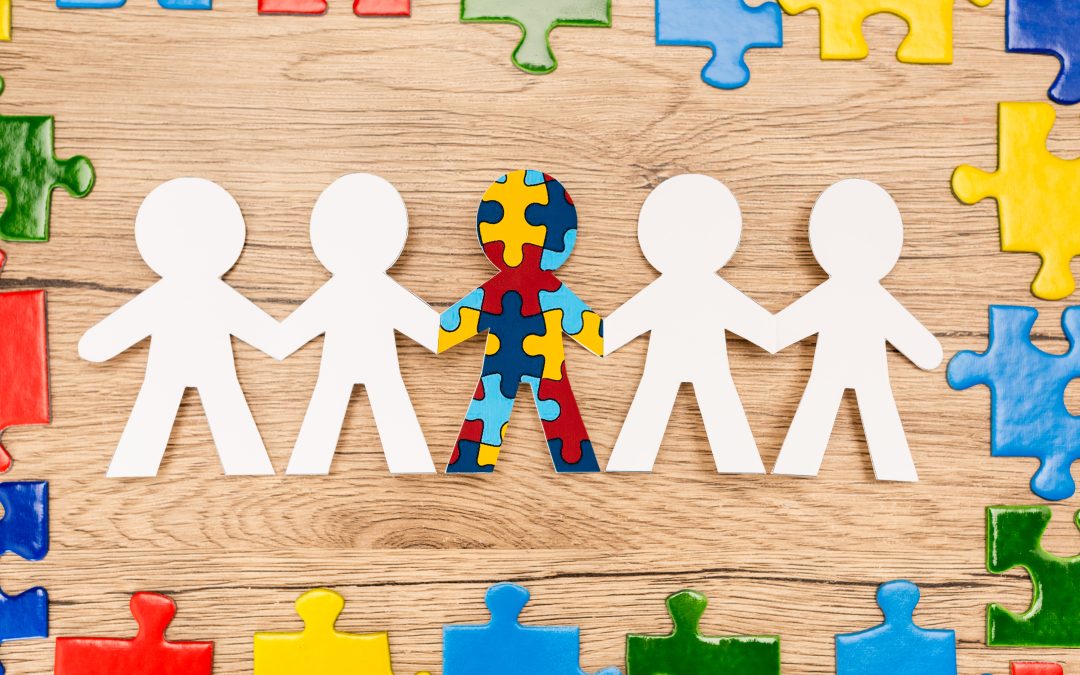Did you know that the signs and symptoms of Autism have been present for more than two centuries?
Of course, back in the 1800s scientists did not have the same tools and data they have now to research and make accurate diagnoses. The Autistic community, scientists, and medical professionals have made strides in Autism research. We have a better understanding of what ASD is and what the signs and symptoms of autism are than ever before. The diagnosis process and treatments have evolved significantly, changing the lives of people with ASD for the better. With the knowledge we have gained, countless new terms have emerged to describe signs, symptoms, treatments, and variations of Autism Spectrum Disorder. The way that we speak about individuals diagnosed with ASD has also changed over time. Using the correct autism terminology when describing a person is important and respectful and learning additional autism terms and definitions will help you better understand and discuss the disorder. In this article today, we will provide you with basic information on autism and important autism terminology.
What is ASD
What is Autism Spectrum Disorder? Autism, or Autism Spectrum Disorder (ASD) is a neurological and developmental disorder that affects how people communicate, interact with others, behave, and learn. Autism can be diagnosed at any age, but symptoms begin to appear around 2-3 years old which is why it is categorized as a developmental disorder. Autism is known as a “spectrum” since there is variation in the type and/or severity of symptoms experienced. Anyone regardless of sex, race, or ethnicity can be autistic. However, CDC research has shown that boys are diagnosed four times more than girls with ASD. This may be because the symptoms in boys and girls look different and ASD could go undiagnosed in girls. Researchers have not been able to determine primary causes for ASD.
Signs & Symptoms
Now that you understand a little about ASD, let’s learn about symptoms. It is important to note that these are just a few of the symptoms, and not all people with ASD will have all these behaviors.
- Making little or inconsistent eye contact
- Not looking or listening to people who are talking
- Not responding or being slow to respond to one’s name
- Difficulties adjusting behaviors in social situations
- Repeating certain behaviors or having unusual behaviors
- Becoming upset by slight changes to routines and struggling with transitions
- Displaying more/less sensitivity to light/sound/temperature/clothing
- Potential sleep problems and irritability
Let’s look at some symptoms you may not have heard of before.
- Echolalia is the meaningless repetition of speech.
- Elopement happens when children wander or run away from secure locations or caregivers
- Many people diagnosed with ASD have special interest or topics that strongly intrigue them. Hyperfixation occurs when they are intensely engaged in one particular interest.
- Stims or Stimming are behaviors that include rocking, hand-flapping, finger flicking, or other repetitive actions that help individuals diagnosed with ASD manage their emotions or block overwhelming sensations.
Diagnosis of ASD
As mentioned above, most providers diagnose ASD around the age of 2 or 3. It begins with routine questionnaires and checkups at your child’s routine well visits. Depending on these variables, additional testing is needed to form a proper diagnosis. ASD is broken down into three diagnosis levels.
- Level 1- Requiring Support: Individuals may struggle with some social cues, communication, and transitions. They can live mostly independent lives with some support.
- Level 2– Requiring Substantial Support: Individuals need significant help with communication, daily living, and social interaction. However, they may present strong skills in certain other areas.
- Level 3– Requiring Very Substantial Support: Individuals have limited verbal communication and require extensive support for daily activities.
It is important to remember these levels represent the support a person needs, not their intelligence level. And just because two individuals have the same level of diagnosis, they will have different strengths and weaknesses. Diagnosing ASD in older children or adults is a little more difficult but can be done with the help of a primary care provider and referrals to other specialists as needed.
Treatments
After the proper level diagnosis, medications, physical/occupational therapy, or other behavioral interventions may be recommended. As clinicians have studied ASD more, they have discovered additional treatments that can be used when treating ASD.
- Applied Behavorial Analysis (ABA) is an evidence-based treatment using the science of behavior and learning. The goal of ABA is to provide individuals with tools and behavior support to overcome obstacles and improve lives.
- Early intervention is key when working with a child diagnosed with ASD. If diagnosed around 2 or 3, the brain is more “plastic” and specialists can begin teaching the child additional ways for their brains to function and thrive in daily situations.
- Occupational Therapy helps individuals develop tools to improve social skills, help with sensory responses, develop fine motor skills, and build self-care skills.
- Physical Therapy helps with additional motor skills such as strength, posture, and balance. A child can continue to build muscle and strength so they can play and interact with other children.
Importance of Using Correct Terminology
As with any other neurological or medical condition, it is extremely important to use correct terminology when referring to Autism Spectrum Disorder. As mentioned above, it is a spectrum disorder due to variations in symptoms. Many changes were made to the autism spectrum in 2013 with the updated release of The American Psychiatric Association (APA) Diagnostics and Statical Manual of Mental Disorders (DSM). And again, some minor updates were made in 2022, with DSM-5-TR. We are going to look at some of the more prominent key terms used when discussing ASD.
Person First vs. Identity First
There are two primary terms used when referring to a person diagnosed with ASD, 1) person with autism (person first) and 2) autistic person (identity first). Let’s compare some of the differences:
- Person First Language
- Emphasizes the person over the diagnosis
- Supports that the person is not defined by their diagnosis
- Ex: Child with autism
- Identity First Language
- This approach views ASD as a part of one’s identity similar to their gender, race, or ethnicity.
- Many supporters believe “with autism” is a negative term
- Ex: An autistic child
Ultimately, the most appropriate term to use it up to the person. If you are unsure, you can simply ask the person you are referring to. Sometimes asking sincere questions and being open to learning new things is the best way to show respect and inclusivity.
Asperger’s Syndrome
Asperger’s Syndrome or Asperger’s was a previously used diagnosis. The term originally was used to describe children who did not have intellectual or language impairment. Their symptoms were viewed as milder. However, in 2013, Asperger’s was included in the broader ASD umbrella– now diagnosed as Level 1 ASD. While many people still use the term Asperger’s, clinicians are pushing for people to use the updated ASD diagnosis.
Outdated Terminology
Now that you have a better understanding of the preferred terminology and some insight into the changes made to the ASD spectrum, let’s look at some outdated terms that shouldn’t be used.
- “High Functioning”– This implies that some individuals with “high function” ASD are better off than others.
- “Low functioning”– This leads to people thinking a person diagnosed with “low functioning” ASD is worse off, or they are seen as marginalized individuals.
- “Suffers from Autism”– Autism does not cause bodily harm. While it does change the way a person may operate and see the world, they are not suffering.
- Calling autism a disease or illness– Autism should be referred to as a disorder.
While mistakes can still be made, it is important to learn from them and begin using the correct phrase and terminology going forward.
Applied Behavioral Advancements
Hopefully, learning about Autism terminology has sparked your curiosity. From early studies to the current understanding of the spectrum, the work continues. As research dives deeper, our ability to support individuals diagnosed with ASD is growing. The most important takeaway is that terminology matters. Being respectful and using accurate language helps foster a more inclusive community.
At Applied Behavioral Advancements (ABA) we have been providing support for the ASD community for nearly 20 years. We offer behavior assessments, occupational/physical therapy, psychological services, and much more. Contact us to schedule an appointment with one of our qualified clinicians. The future is bright for a more inclusive world that embraces unique strengths and perspectives of individuals on the spectrum.

